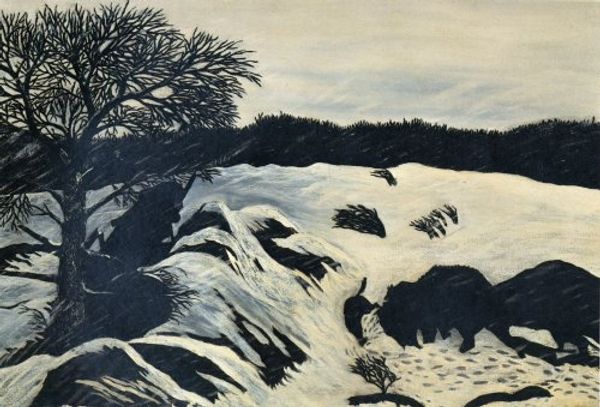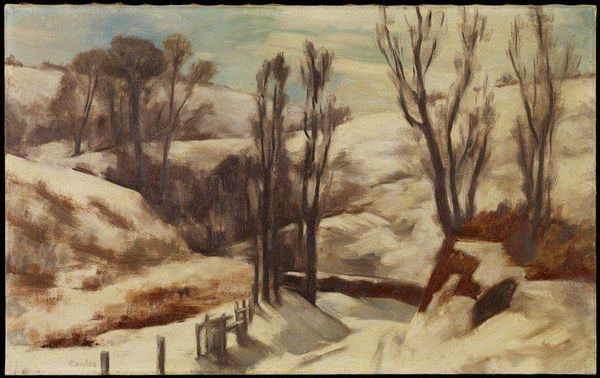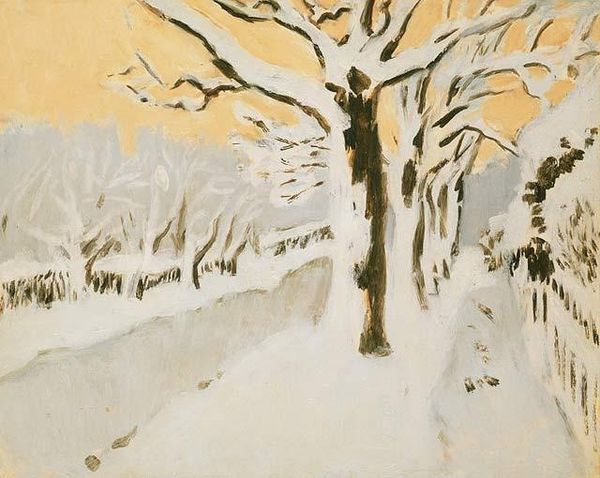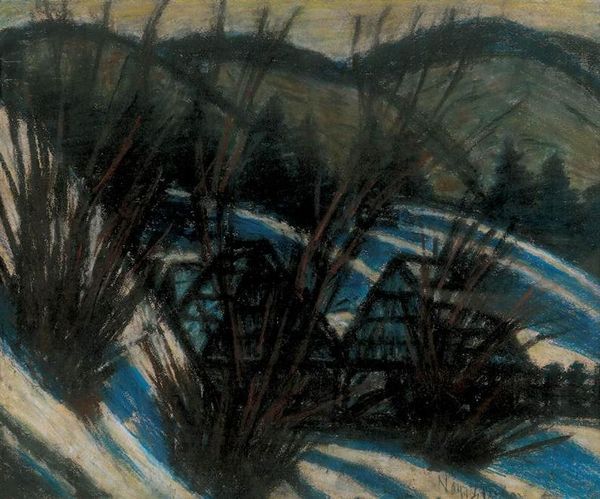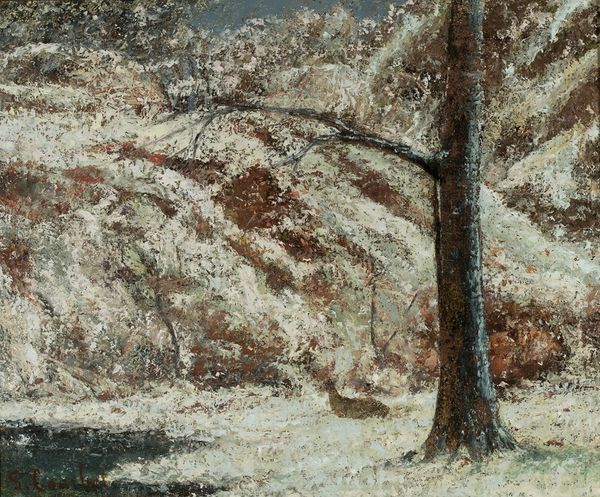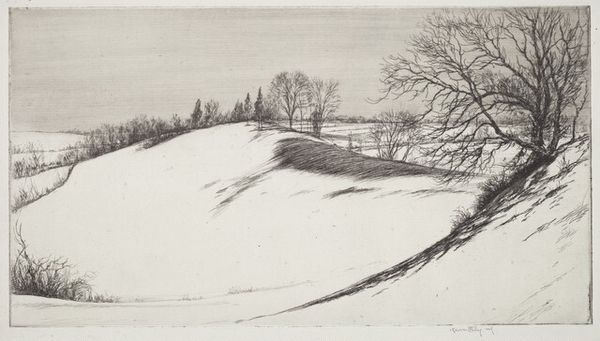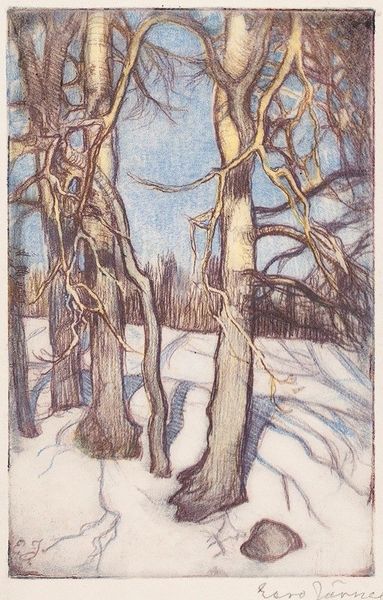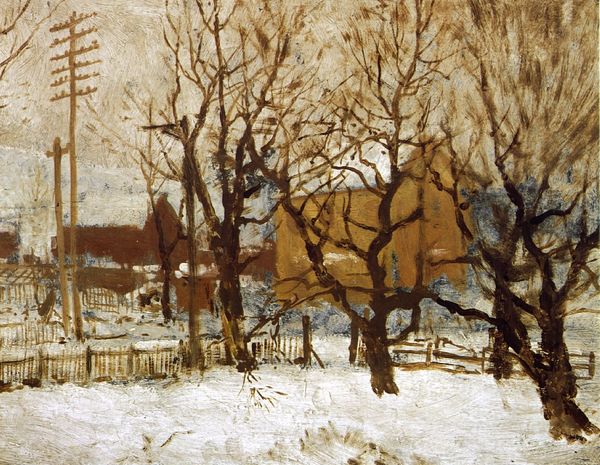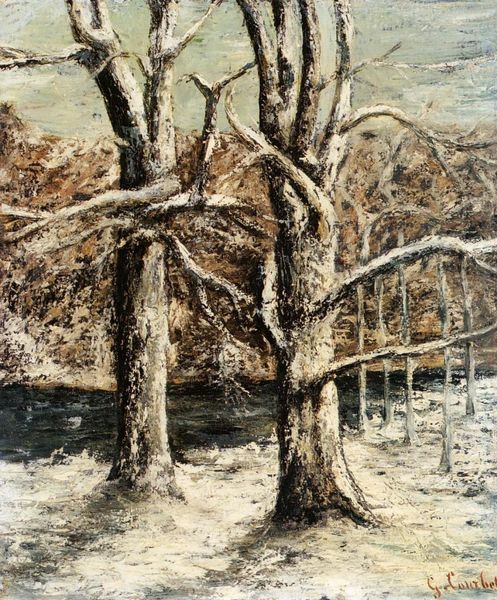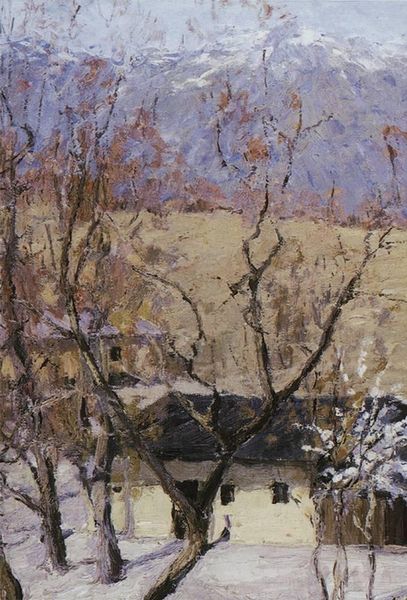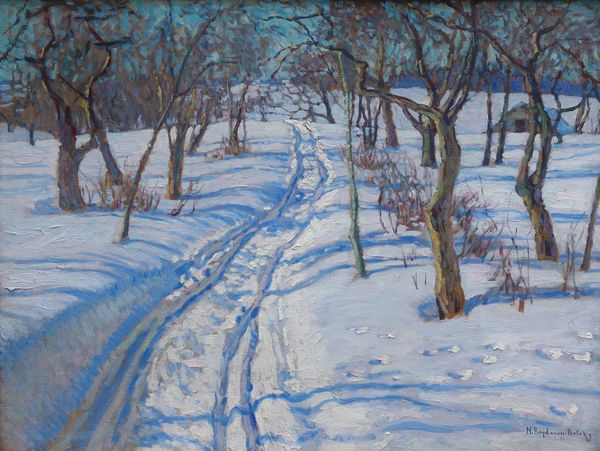
Copyright: Public domain
Curator: Welcome. We are looking at "The Old Mill," an oil painting rendered in 1930 by Horace Pippin. The scene is dominated by snow-covered fields, leading up to a brown structure that we presume is the titular mill. What's your first take on it? Editor: A crisp, almost stark, image. The thick impasto makes the snow feel palpable. The palette is constrained—mostly whites, browns, and greys, imparting a solemn stillness. Curator: I agree. It’s significant to consider the sociopolitical realities during Pippin's career. As a Black artist working in a segregated art world, his choice to paint everyday landscapes carries weight. He asserts Black life into the canon, without relying on stereotypical depictions. Editor: The old mill as a recurring motif across centuries and cultures suggests something archetypal here, doesn't it? Perhaps a symbol of human labor, endurance, and the passage of time itself. Notice how the path of footprints draws your eye. Curator: Absolutely. This simple image embodies narratives concerning labor and nature. The footprints indicate someone walked there before, which reminds us that the space is actively being occupied and utilized. I am keen to investigate its accessibility and implications for Black communities within rural landscapes of the era. Editor: We can observe echoes of Bruegel's winter scenes in the simplified forms and the elevated perspective. There's an interesting blend here. Curator: Indeed. By aligning himself visually with recognized landscape traditions, Pippin subverts existing hierarchies within the art establishment. There is, in this sense, resistance through representation, isn’t it? Editor: The painting's enduring appeal seems rooted in its elemental, almost dreamlike simplicity. A place we instinctively recognize even if we've never been there, the painting reminds us of the stories inscribed on the landscape. Curator: Absolutely. Reflecting on Pippin’s ‘The Old Mill,’ its complex and vital social statements exist beneath its still surfaces, allowing this painting to serve as an intersectional lens to view cultural, artistic, and rural dimensions. Editor: The footprints may fade, but art's symbolic trace endures, always calling on us to engage anew with its layered meanings and quiet invitations.
Comments
No comments
Be the first to comment and join the conversation on the ultimate creative platform.
